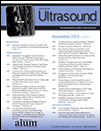Can Sonography Distinguish a Supraorbital Notch From a Foramen?
Abstract
Diagnostic tools for evaluating the supraorbital rim in preparation for nerve decompression surgery in patients with chronic headaches are currently limited. We evaluated the use of sonography to diagnose the presence of a supraorbital notch or foramen in 11 cadaver orbits. Sonographic findings were assessed by dissecting cadaver orbits to determine whether a notch or foramen was present. Sonography correctly diagnosed the presence of a supraorbital notch in 7 of 7 cases and correctly diagnosed a supraorbital foramen in 4 of 4 cases. We found that sonography had 100% sensitivity in diagnosing a supraorbital notch and foramen. This tool may therefore be helpful in characterizing the supraorbital rim preoperatively and may influence the decision to use a transpalpebral or endoscopic approach for supraorbital nerve decompression as well as the decision to use local or general anesthesia.




